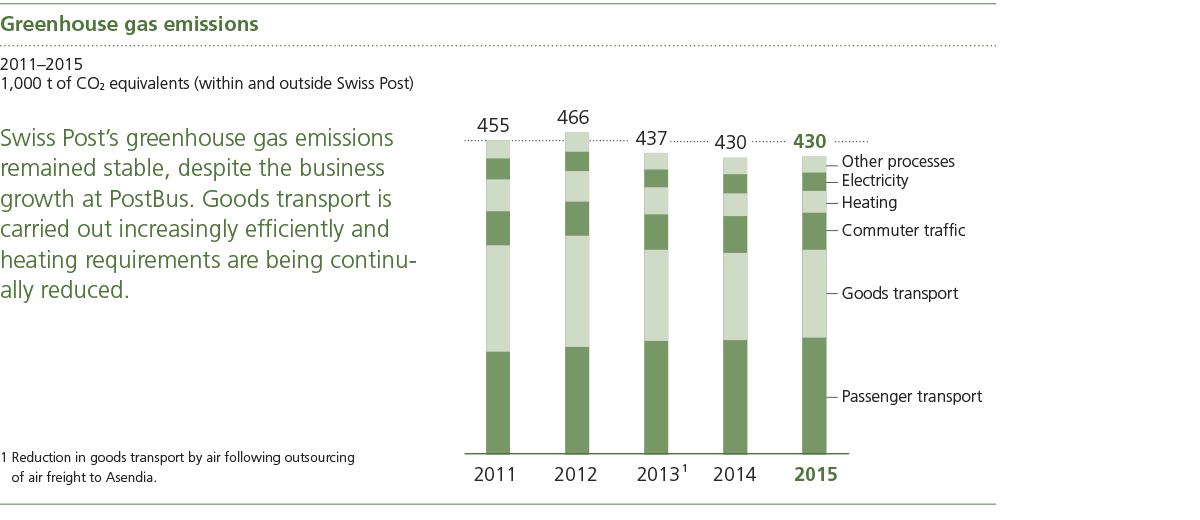Sustainability strategy
On track to meet targets with a commitment to climate and environment
With its dual focus on climate protection and energy, Swiss Post has continued to successfully implement its 2014–2016 sustainability strategy in the past year. It aims to increase CO2 efficiency by at least 10 percent by the end of 2016.
The goal of the 2014 – 2016 sustainability strategy is ambitious: Swiss Post intends to cut its greenhouse gas emissions for every consignment transported, every passenger carried, every transaction, and every heated square metre in its buildings – increasing its CO2 efficiency by the end of 2016 by at least 10 percent in just six years. Where does Swiss Post stand at the moment? “We have implemented numerous measures during the financial year and continued to reduce CO2 emissions,” says Anne Wolf, Head of Corporate Responsibility. “We are investing in the best available technologies and steadily increasing the share of renewable energy used for fuel, electricity and heating buildings. Particularly noteworthy is the new Swiss Post headquarters: a pioneering new building in terms of sustainability.”
Relevant topics today and tomorrow
Swiss Post's sustainability strategy also includes social commitment. Alongside its implementation of the planned measures, Swiss Post has already prepared the basis for the next strategy. With a view to the 2030 time horizon, the company examined the issues it wishes to address in order to ensure a continued credible commitment in the area of corporate responsibility in the future. What expectations do internal and external stakeholders have? The findings of numerous interviews were brought together in a relevance matrix. In addition to the “perennial” issues of climate and energy, external stakeholders also attach a great deal of importance to working conditions at suppliers – an area to which Swiss Post, with its policy of sustainable procurement, for example of work clothing, has been committed for years.

Reducing CO2 emissions
Swiss Post implements a wide range of measures to reduce CO2 emissions. Three examples:
During their delivery rounds, around 1,600 Swiss Post vans send over 4 million pieces of data per day – from their location and number of kilometres covered to their CO2 emissions. Analysis of the data collected on the rounds provides insights into driving behaviour that help to save fuel.
In the Eclépens, Härkingen and Zurich-Mülligen letter centers, Swiss Post modernized the so-called lifting beams, which move the letter crates in the high-bay warehouse. The braking energy they generate is now fed back as electrical energy into the grid, saving around 114 MWh of energy per year – equivalent to about 15 tonnes of CO2.
In 2015, diesel with a 7 percent share of biodiesel – B7 diesel – was available at 26 Mobility Solutions Ltd petrol stations. It is made from residues from edible oil produc-tion. In 2015, the use of environmentally friendly biodiesel achieved savings of more than 1,100 tonnes of CO2.
For more detailed information on sustainability, please refer to the comprehensive GRI report.
Sustainability is an integral part of Swiss Post's corporate and management culture.
Marco Imboden,
Head of Communication